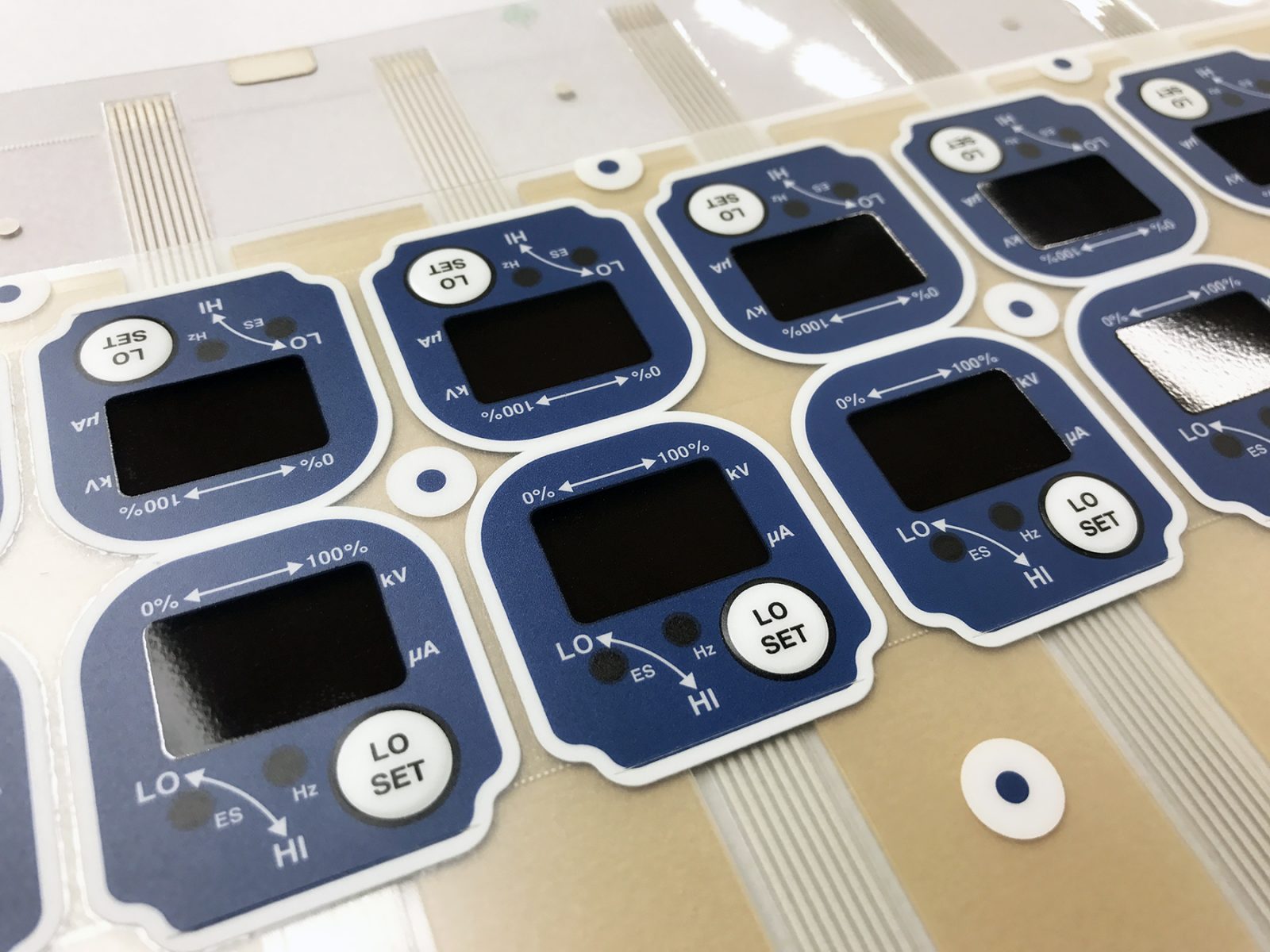How a Membrane Switch Improves Individual Experience and Gadget Effectiveness
How a Membrane Switch Improves Individual Experience and Gadget Effectiveness
Blog Article
Recognizing the Functionality of Membrane Changes for Interface Instruments
The functionality of membrane layer changes stands for a significant development in user interface layout, integrating performance with aesthetic adaptability. These buttons operate via a multi-layered structure that equates user interactions right into electric signals, permitting for both portable designs and resilience versus environmental aspects. As industries significantly prioritize customer experience, comprehending the nuances of membrane layer switch innovation ends up being crucial. What ramifications do these improvements hold for future applications, and how might they redefine individual communications throughout numerous tools?
What Are Membrane Layer Switches?
Membrane layer buttons are innovative user interface devices that assist in user interaction with electronic devices. These functional elements contain multiple layers, including a visuals overlay, spacer, and a published circuit layer. The design enables a seamless integration into numerous electronic tools, boosting both the aesthetic and practical elements of interface.
Membrane layer buttons are generally used in a vast array of applications, from family appliances to industrial equipment and medical tools. Their building generally includes a thin account, making them an ideal choice for small layouts. The tactile responses offered by these switches can be engineered to satisfy certain customer choices, making sure effective interaction between the customer and the device.
Sturdiness is another considerable benefit of membrane buttons, as they are immune to dirt, dampness, and chemicals, which boosts their life-span in demanding settings. In addition, these buttons can be tailored in terms of form, size, and graphic design, enabling branding and user-specific attributes. Overall, membrane layer switches represent a functional service for boosting individual experience in electronic tools, combining capability with visual charm in a reliable way.
Exactly How Membrane Layer Changes Job
Operating on a straightforward principle, membrane switches over make use of a layered building and construction to sign up customer input effectively. Each switch is composed of numerous layers, including a printed circuit layer, a spacer layer, and a top visuals layer, which are created to collaborate seamlessly. When a user presses the top layer, it presses the spacer layer, bringing the conductive elements of the circuit layer right into contact with each other.
This get in touch with develops a shut circuit, signifying the gadget to implement a specific function. The design permits for numerous setups, consisting of responsive responses, which can boost the user experience by providing a physical feeling upon activation. The materials used in membrane buttons usually consist of adaptable substrates, such as polyester or polycarbonate, which ensure sturdiness and durability against deterioration.

Key Advantages of Membrane Layer Switches

Another significant advantage is their density. Membrane switches are thin and lightweight, which makes it possible for manufacturers to save room in their tools without compromising functionality. This attribute is especially helpful in applications where weight and quantity are crucial considerations.
In addition, membrane layer buttons are resistant to dust, wetness, and chemicals, boosting their durability. This durability expands their life-span and minimizes the need for regular substitutes, leading to cost financial savings in time.
Moreover, the tactile feedback provided by membrane layer switches can be enhanced to enhance customer communication. They can include features such as raised buttons or audible clicks, boosting functionality and customer experience.
Applications Across Industries
User interface devices making use of membrane layer switches prevail in a wide range of markets, showcasing their flexibility and functionality. Membrane Switch. In the clinical market, membrane layer switches are important to devices such as analysis tools and patient monitoring systems, where their toughness and convenience of cleansing are critical for keeping health requirements. In a similar way, in the vehicle sector, these switches are utilized in control panel controls and infotainment systems, providing a sleek and modern interface for customers.
Additionally, the consumer electronics field take advantage of membrane layer buttons in devices and portable tools, where compact layout and easy to use user interfaces boost individual experience. Industrial applications additionally leverage membrane layer switches over for control board in equipment and automation systems, stressing their effectiveness and resistance to extreme settings.
In the aerospace and protection sectors, membrane buttons are utilized in cabin controls and tools, where dependability and performance under severe conditions are critical. In addition, the video gaming sector increasingly includes membrane layer switches in controllers and arcade machines, adding to an interesting user experience. Generally, the versatility of membrane layer switches enables their prevalent use across countless markets, underscoring i thought about this their significance in modern interface layout.
Future Trends in Membrane Layer Switch Modern Technology

Furthermore, making use of advanced materials, such as polycarbonate and polyester movies, is anticipated to rise, giving enhanced longevity and resistance to environmental stress factors. These materials add to the total long life of membrane layer switches, making them ideal for harsher commercial applications.
In addition, the unification of wise technology, consisting of IoT connectivity, will make it possible for membrane layer switches to interact with various other tools and systems, facilitating a much more interactive individual experience. This fad lines up with the growing need for smart devices across various fields, from healthcare to customer electronic devices.
Last but not least, personalization choices are expected to broaden, enabling suppliers to develop bespoke remedies tailored to specific individual demands and preferences. These advancements will certainly place membrane switches as view website necessary elements in the evolution of user interface innovation.
Conclusion
In verdict, membrane switches represent a pivotal innovation in user interface modern technology, using a trustworthy and functional remedy for varied digital applications. As innovations in product scientific research and touch noticing technologies continue, the performance and applicability of membrane layer buttons are expected to broaden, enhancing their importance in modern digital devices.
Report this page